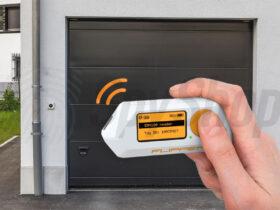More than 200 spicy images, one adult movie, almost 1500 photos (also of children), hundreds of messages, confidential documents and even more was restored from 12 out of 20 second-hand smartphones that Avast employees bought in European pawnshops.
Sellers swore that the devices were cleaned of all data and restored to factory settings and the specialists used basic freeware for data recovery. Few clicks were enough to recover data that was supposed to be erased for good, and instead, it was easily intercepted by persons who could have made it public.
Imagine that you‘ve sold a smartphone and a few weeks later a friend tags you on a Facebook photo. You click the red notification icon and‘ see your cat on a meme. The photo of your cat was taken using the sold phone, which was full of your private data.
Now, think about yourself becoming a meme, your intimate video clips on adult websites, photos of your children in the hands of paedophiles, and your credentials available to cybercriminals.
To avoid that you just need to erase all the data from your device for good.

Market of used smartphones is worth 17 billion dollars
In 2015 consumers sold an astonishing number of 80 million smartphones what generated over 11 billion dollars and, according to Deloitte Global, this year it will increase by 50%, what means 120 million of smartphones sold on average by 140 dollars apiece.
‘There is much demand on used smartphones especially after Christmas and the New Year‘s season‘, comments data recovery expert in the Detective Store. He warns, ‘People sell older models, because they‘ve got newer gadgets. They erase data, restore to factory settings and are positive that their old phones do not contain any personal data. They are not aware that such devices are still full of sensitive personal data.‘
So the market of used smartphones is full of not only unwanted devices but also personal data of their previous owners that in the wrong hands may go public and breach their beloved privacy.
Safe data deletion versus restoring to factory settings
Does restoring to factory settings delete all data? Using this function is like having a skeleton in the closet – sooner or later it will come to the surface and everybody will see what you wanted to hide.
Sure, it seems that all data is deleted and the phone is like new but, if you restore its memory, the data is there again.
It makes sense to use this method if, after deleting the data and restoring to factory settings, you fill the device‘s memory with random files that have nothing to do with you. Once the device is restarted after restoring to factory settings, the data gets overwritten, so if anybody wanted to restore its memory, they would get the dummy files, not your real ones.
Restoring to factory settings is also effective on the condition that the data stored in a device with Android OS was encrypted. After encryption, that may take up to few minutes, you need to restore it to factory settings, and there‘s no sign of your private files and that the partition was encrypted.
Encrypted iPhone versus safe data deletion before selling a phone
If you own an iPhone, iPad or iPod touch, the instruction on how to delete your personal information from these devices is available here. It‘s much easier thanks to automatic encryption (in Android other than 6.0 you have to turn it on manually). The Erase All Content and Settings function deletes they key which is essential to decode your data.
Unfriendly Windows phone and deletion of undesired data
Articles about safe and permanent data deletion from smartphones often omit devices with Windows Phone, but a comprehensive guide has been created by Gadgets.ndtv.com website. The author stresses that after a reset was performed, seemingly deleted data still can be restored. To avoid this, rewrite your data as described above, what is as easy as copying files to a pen drive. You may also easily perform backup of data that you want to save from your old phone.
Safe data deletion from a smartphone versus applications – Do they actually work?
Some apps from the Google Store like iShredder 4 allow data rewriting. Its manufacturers claim that it wipes and sanitizes unwanted files with ease and military grade security as it uses cutting-edge, tested and trusted deletion algorithms.
Is it too good to be true?
If you decide on using an app to erase your data, pay close attention to its detailed description in the Google Store, carefully read how it works and whether your device will be blitzed beyond recovery.
iShredder 4 Standard wipes out only free disk space. Photos, contacts, folders and files can be deleted in the Professional version, but it doesn‘t erase text messages and temporary files which are in turn overwritten in the next version of the app – Enterprise.
For Android smartphones there is a paid app available – Android Erase Data, which you can use to make a backup copy of your device, or to completely wipe off all data, both existing and already deleted (but in fact restorable).
The app displays time needed for deleting data, which can be quite long, so better get a coffee and some patience, as the process and data encryption shouldn‘t be interrupted.
During deletion of data, do not leave your computer unattended and carefully read through all notifications displayed on the screen, each and every window that pops up! The software may want to restore the device to factory setting what has to be confirmed by clicking the Ok button.
‘If you want to erase your data in an effective way, read with comprehension and perform all needed steps, nevertheless if you‘re performing this on a device with iOS, Windows Phone or Android. If you interrupt the process or omit any essential step due to a moment‘s inattention, you need to start all over‘, expert explains. ‘If you find the instructions too complicated or you‘re worried that it won‘t work, turn to dedicated experts that will prepare your smartphone for sale in a professional and discreet manner‘, he sums up.











Leave a Reply